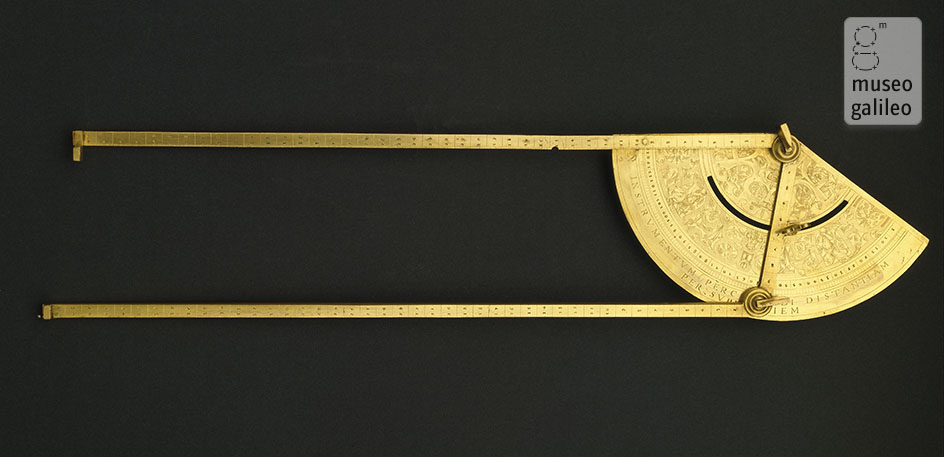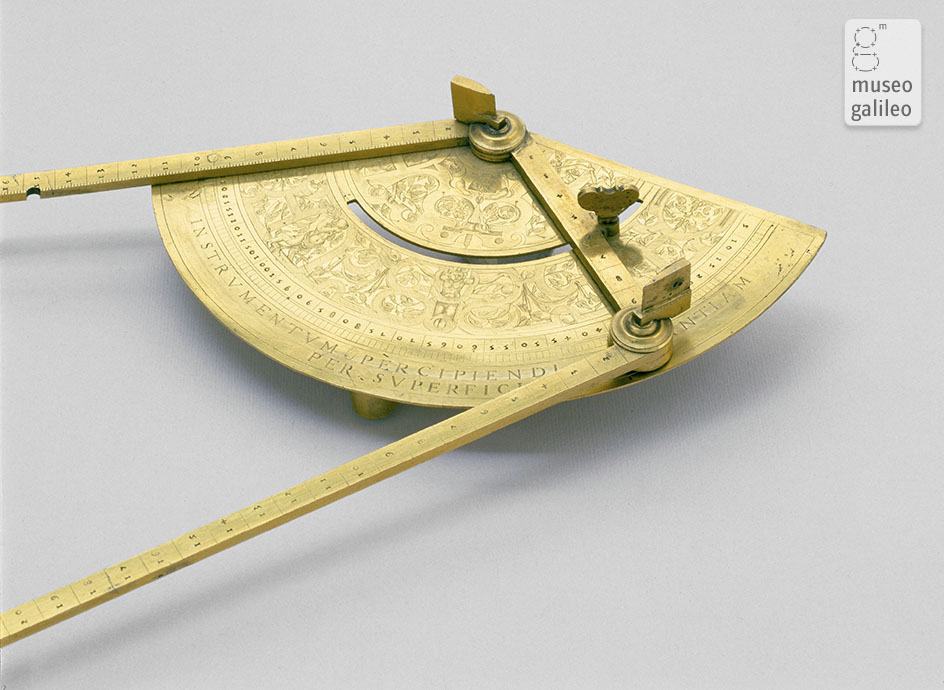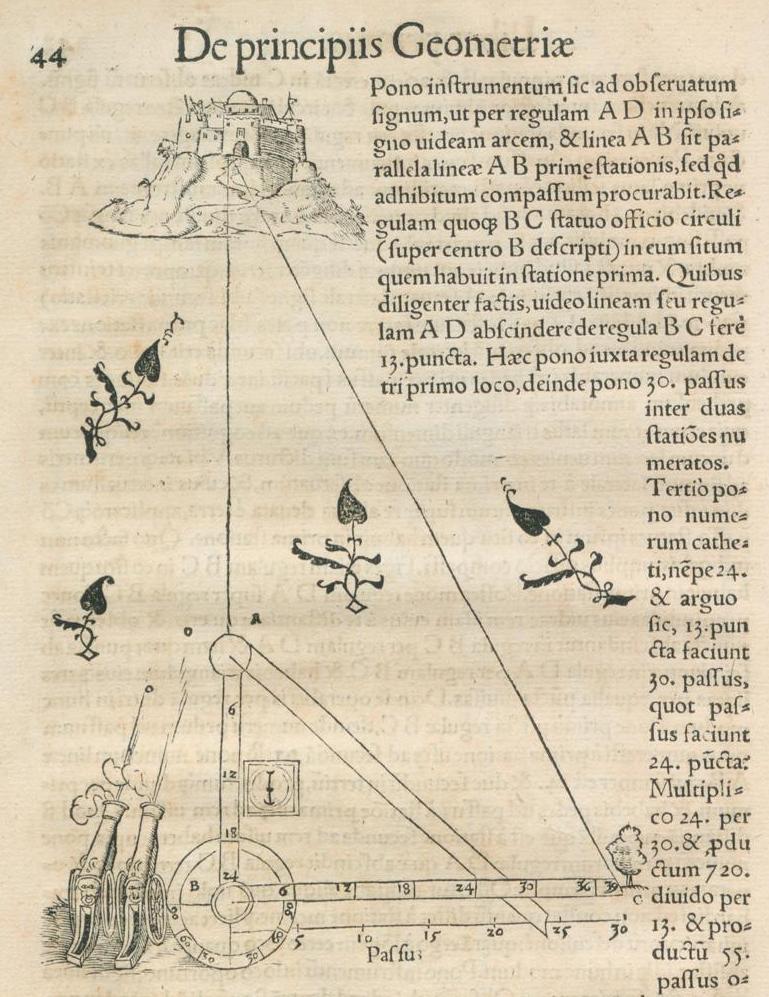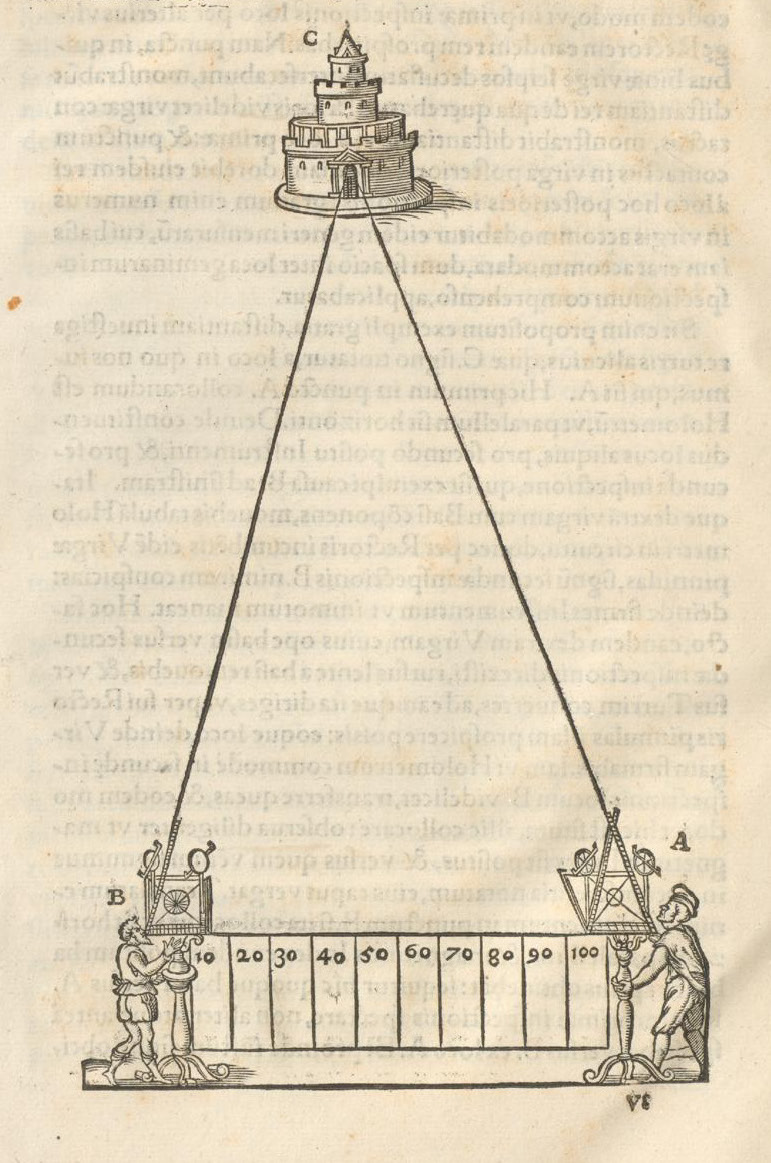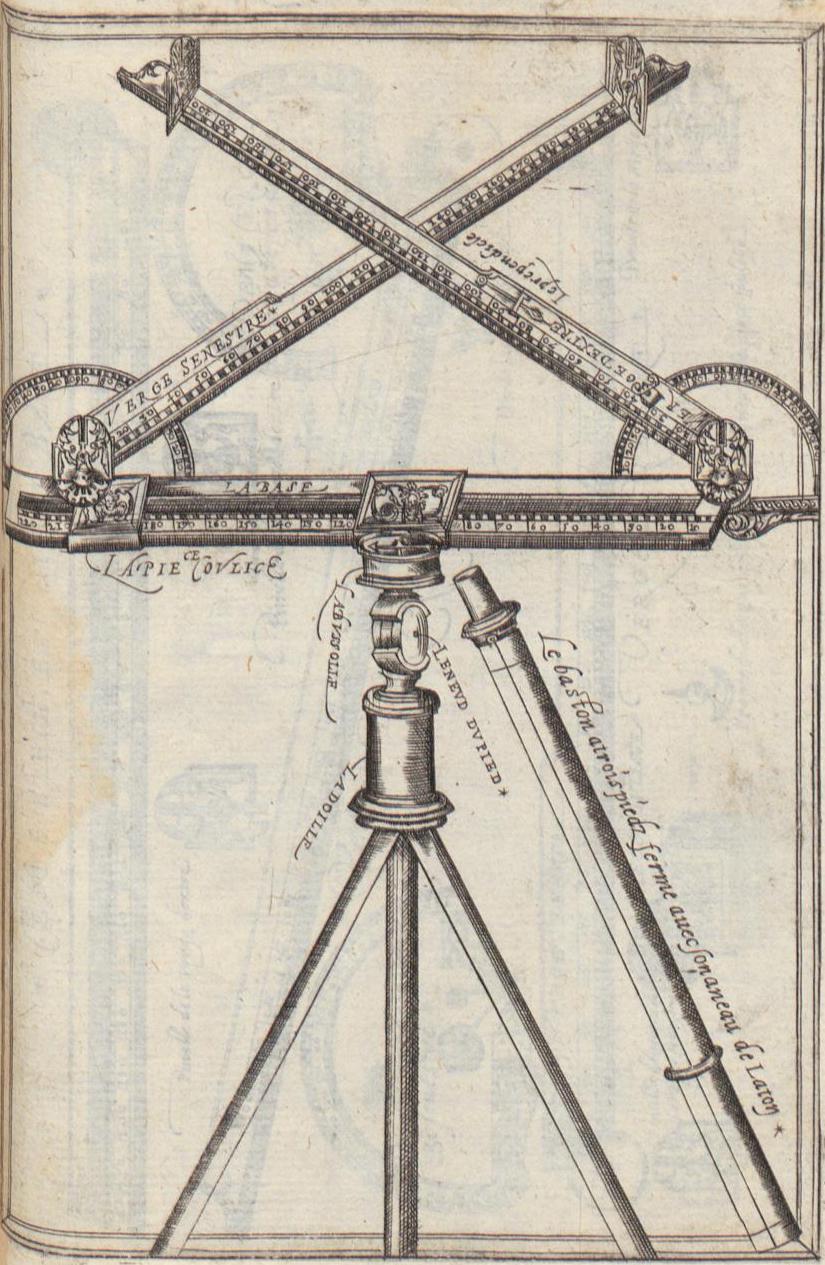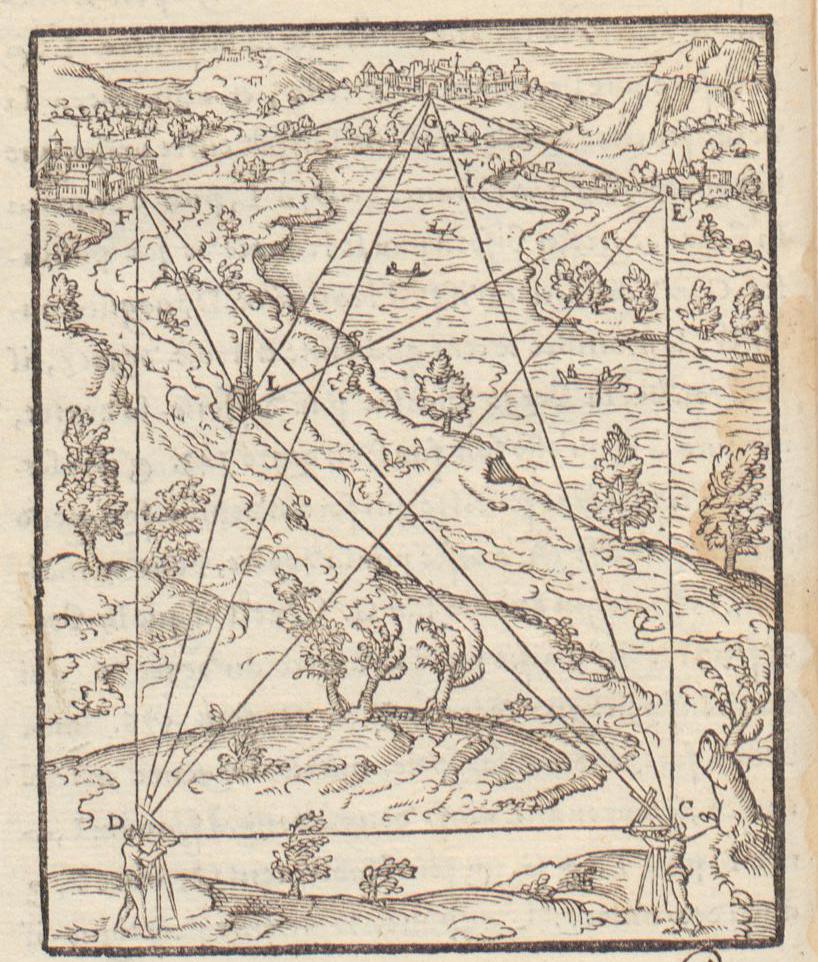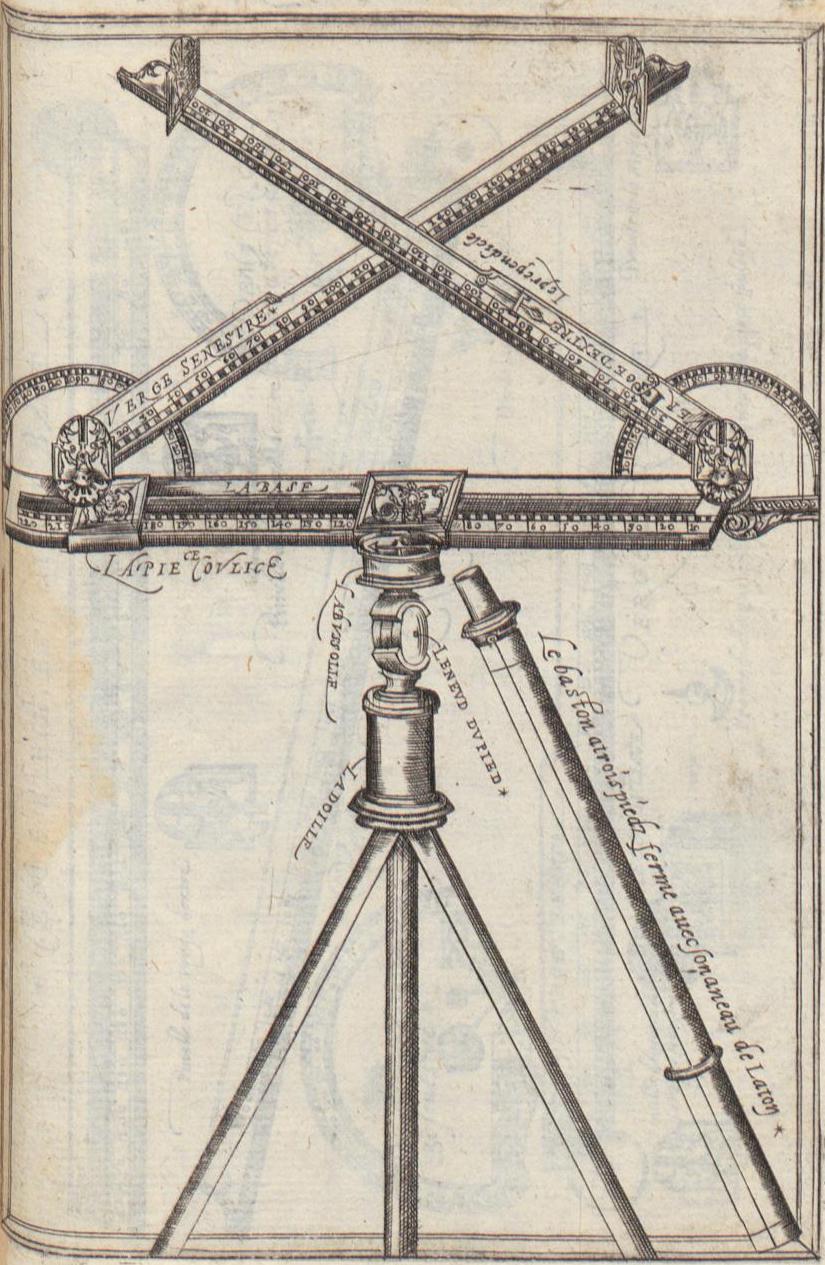
Danfries Triangualtion Instrument - 1597
Triangulation Instruments
A triangulation instrument is a form of surveying instrument often recommended for range-finding by gunners as well as for land surveying. It was alleged to be a convenient way to apply the principle of triangulation, and works by forming a triangle with the arms of the instrument similar to the triangle on the ground. One arm can be considered equivalent to the base-line on the ground, while a second arm, with sights, pivots at one end, and a third, also with sights, pivots on a mount that slides on the base-line arm. Each arm is marked with the same linear scale. The distance between the pivoted arms is set to a scaled equivalent of the base-line on the ground. Sightings on the target are taken with either pivoted arm at respective ends of the base-line. The lengths of either arm to their point of intersection give the equivalent distances to the target at the known scale.
As indicated below, a number of authors devised Triangulation Instruments and published books about the instruments in the late 16th and early 17th centuries. The instruments weren't very practical for most surveying purposes, however. So the instruments are very rare and were probably little used.
Other Triangulation Instruments
I found a small number of Triangulation Instruments owned by either museums or private collections. Unfortunately all of the pics are under copyright protection. But see the links below for a couple of these instruments:
Habermel Triangulation Instruments
Burgi Triangulation Instruments
Collectability
Very few Triangulation Instruments were made originally, and I only see a few in Museum holdings, auction results, and private collections. Triangulation Instruments are pretty cool instruments, but weren't very practical. Given the rarity, the few Triangulation Instruments that survived have been mostly snapped up by European museums and large private collectors. If one does pop up for sale, it will likely be offered at auction by Christies. It won't be cheap.
Reference Materials - Triangulation Instruments
There are very Triangulation Instruments, and even fewer pics of them that aren't under copyright protection. The materials below provide a good taste of what Triangulation Instruments looked like.
My Reference Materials
Here are the main reference books I used while researching my Ancient Surveying Webpages:
5-Volume Catalogue Of The Most Important Worldwide Private Collection Of Scientific Instruments (With 928 Color Illustrations). Written in German, but an amazing reference tool. The pictures are incredible - most of the instruments are not found on the internet. Crazy Expensive.
Bennett's Catalogue of Surveying and Related Instruments (2022). Fantastic pics and info about the surveying related instruments at the Galileo Museum (which has an INCREDIBLE collection of early instruments).
Bennett's The Divided Circle (1987). A History of Astronomy, Navigation and Surveying Instruments.
Delalande Antiques Two Volume book series on Astrolabes. The two volumes walk you thru how to use and collect Astrolabes. A must have if you want to collect Astrolabes.
Kiely's Surveying Instruments - Their History (1947) Somewhat dated now, but still has a great deal of relevant information. Not the easiest read, however.
Daumas' Scientific Instruments of the 17th and 18th Centuries (Translated into English 1972).
Richeson's English Land Measuring to 1800 (1966). A nice book that is mis-paginated unfortunately. But still contains some good information about early English land surveying.
Important Websites where you can use the search function (e.g. "Theodolite") to find instruments:
The Museo Galileo Virtual Museum - A Stunning Collection of Early Surveying Instruments
The Science Museum Group (UK Based)
Harvard University Collection of Scientific Instruments
The Museum of History and Science, Oxford
© 2020 Russ Uzes/Contact Me
